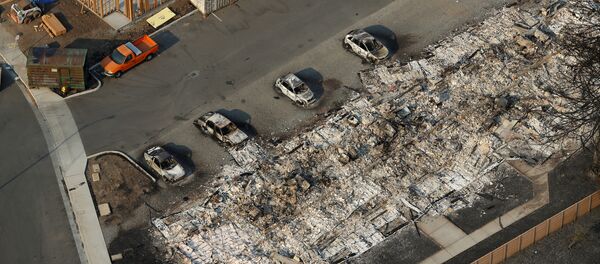Global production of wine is expected to fall to a "historically low" level in 2017, down more than eight percent on last year.
The Director General of the International Organisation of Vine and Wine (OIV), Jean-Marie Aurand, said on Tuesday, October 24, they estimated only 246.7 million hectoliters would be produced in 2017.
Italie 39,3 Miohl, France 36,7Miohl, Espagne 33,5 Miohl: niveaux de production historiquement bas #OIVpressconference
— OIV (@OIV_int) 24 October 2017
[Tweet: "Italy 39.3 Mhl, France 36, 7 Mhl, Spain 33.5 Mhl: historically low production levels"]
"This level of world wine production is historically low, with such levels not having been seen since the 1950s and start of the 1960s," said Mr. Aurand.
The Wine and Spirit Trade Association (WTSA), which represents producers and importers in the UK, said the fall would obviously impact on price.
"Prices will have to rise because of the relative scarcity of the product. We have already seen price rises," a WSTA spokesperson told Sputnik.
Demand From China and Millennials
There has also been growing demand from China and other emerging markets, where middle class "aspirational" demand for luxury goods like wine and truffles is rising.
Demand has also been pushed up by millennials. A study from the Wine Market Council earlier this year said millennials drank 42 percent of all wine in the United States in 2015, more than any other age group. They are also increasingly buying wine online and through apps.
So with demand rising and supply dipping, expect price rises in 2018.
The decrease in supply has been mainly due to falls in Europe's main producers, France, Italy and Spain. Germany also recorded low production.
Perfect Storm of Frost and Drought
"The low level of production in 2017 is due to the exceptional conjunction of frost and drought in western Europe. Wines produced during one harvest are not consumed during the following year and stocks exist in producers or merchant cellars. Data given by French customs last week, shows that close to 54 million hectoliters are in reserve," Yann Juban, from the OIV, told Sputnik.
"There was a late spring frost in Europe, which had a big impact, and then there were forest fires in Spain and there have been huge fires in the US, with whole vineyards burnt down in the Napa Valley," the WSTA spokesperson told Sputnik.
"Smoke will taint grapes but in some parts of Spain the grapes were sufficiently ripe enough to survive the effects of the smoke taint," he added.
English vineyards unite to shine a spotlight on the UK’s harsh wine duty policy. The tax burden stifles growth. https://t.co/T3n9nCH21S
— WSTA (@wstauk) 23 October 2017
The only European countries which saw rises in production were much smaller producers — Portugal, Hungary, Austria and Romania.
Argentina raised production slightly, but Chile's levels remained low.
Growing production from Australia was unable to offset the stark reductions in Europe.
UK Production to Double by 2020
British wine production is a tiny fraction of that of countries like France, but Mr. Pratt said UK vineyards have promised to double production by 2020.
"English wine production is a much younger industry than countries like France and Germany. In the 1970s we only had a couple of vineyards. Now there are a lot more and a couple of French companies have started investing in English vineyards," the WSTA spokesperson told Sputnik.
"The climate is increasingly moving towards favorable conditions. Most vineyards are in the south of England or in south Wales but there are some in Yorkshire," said the WSTA spokesperson, who pointed out that English wine was mainly of the white and sparkling variety.
Britain is a major importer of wines, especially from Australia and Chile.
Brexit Question Mark
Huge containers of wine are shipped over to the UK, where they are then bottled and re-exported to markets in Europe.
Two of Australia's biggest wine companies, Treasury Wine Estates and Accolade, send wine to the UK and Accolade has a huge bottling plant near Bristol, where they bottle brands such as Wolf Blass, Coonawarra, Hardys, Kumala and Echo Falls for themselves and TWE.
The WSTA spokesperson said the industry was increasingly concerned about the prospect of the British government walking away from the Brexit negotiations without a deal.
"Brexit is the big spanner in the works. Are we still going to be able to trade with Australia and Chile. If we are going to be part of a EU trade deal, we see export potential," he said, adding there were fears that companies such as Treasury Wine Estates might be tempted to relocate to France or Germany.




